Papers
Lab new paper is out!
12/09/25 03:24
Lab new paper is freshly out in Biomolecules! Congratulations to Sagar, Paris!
Gene Duplication, Translocation, and Molecular Evolution of Dmrt1 and Related Sex-Determining Genes in Anurans
https://www.mdpi.com/2218-273X/15/9/1306

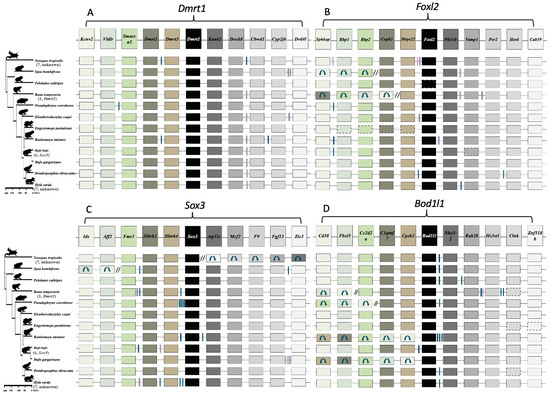
Gene Duplication, Translocation, and Molecular Evolution of Dmrt1 and Related Sex-Determining Genes in Anurans
https://www.mdpi.com/2218-273X/15/9/1306


New lab preprint on gene duplicatinon, translocation, molecular evolution of sex-determining genes in frogs
10/06/25 01:05
Lab new preprint 🐸🧬👇
Gene duplication, translocation & molecular evolution of Dmrt1 and related sex-determining genes in anurans
https://doi.org/10.1101/2025.06.11.659201
Dive into master sex-determining genes evolution, gene translation driving sex chromosome turnovers in 🐸✨
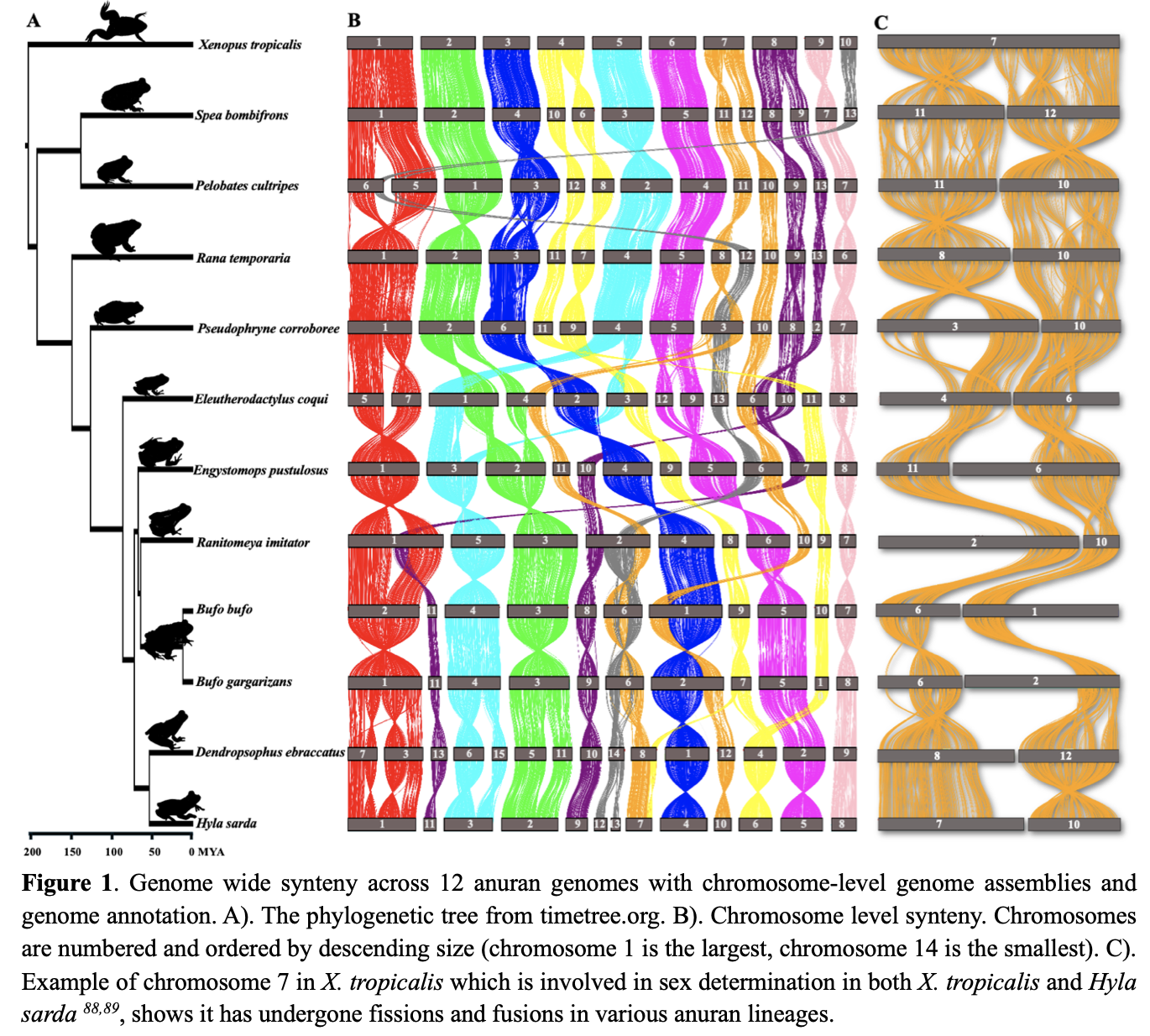
Gene duplication, translocation & molecular evolution of Dmrt1 and related sex-determining genes in anurans
https://doi.org/10.1101/2025.06.11.659201
Dive into master sex-determining genes evolution, gene translation driving sex chromosome turnovers in 🐸✨

Pizza lunch and team bonding
06/06/25 00:55
We enjoyed a team lunch with delicious pizza! Barborá and Ezgi, we missed you guys, next time then!


New paper is out - Nature Communications
04/06/25 00:59
New paper is out in Nature Communications!
I had only a tiny role, but still thrilled to be part of the ride. Huge kudos to Elise Lucotte, Tatiana Giraud and team for leading this great work🧬🍄🎉
Check it out 👉 https://www.nature.com/articles/s41467-025-60222-5
41467_2025_60222_Fig1_HTML.png
I had only a tiny role, but still thrilled to be part of the ride. Huge kudos to Elise Lucotte, Tatiana Giraud and team for leading this great work🧬🍄🎉
Check it out 👉 https://www.nature.com/articles/s41467-025-60222-5
41467_2025_60222_Fig1_HTML.png
New prepring on ring-forming multiple sex chromosomes of Amazonian frogs
01/04/25 11:04
New preprint! 🐸✨
Happy to contribute to this fascinating study on ring multiple sex chromosome systems in Amazonian frogs 🐸🧬!
https://www.biorxiv.org/content/10.1101/2025.03.27.645801v1


Happy to contribute to this fascinating study on ring multiple sex chromosome systems in Amazonian frogs 🐸🧬!
https://www.biorxiv.org/content/10.1101/2025.03.27.645801v1


Our new review paper is accepted in JEB!
17/03/25 10:59
Congratulations to Barbora on the review publication 🎉👏 ✨
We review the latest development and understanding of the role of Dmrt1 gene in sex determination, as well as gonadal sex differentiation across vertebrate groups.
https://academic.oup.com/jeb/advance-article/doi/10.1093/jeb/voaf031/8090523

We review the latest development and understanding of the role of Dmrt1 gene in sex determination, as well as gonadal sex differentiation across vertebrate groups.
https://academic.oup.com/jeb/advance-article/doi/10.1093/jeb/voaf031/8090523

Huge congratulations to Paris on the publication in Science!
10/02/25 00:45
Huge congratulations to Paris on the publication in Science! 🎉👏 Exciting new insights into Y chromosome evolution in Silene latifolia—a major milestone in understanding sex chromosome dynamics. Well done, Paris! 🧬✨
https://www.science.org/doi/10.1126/science.adj7430
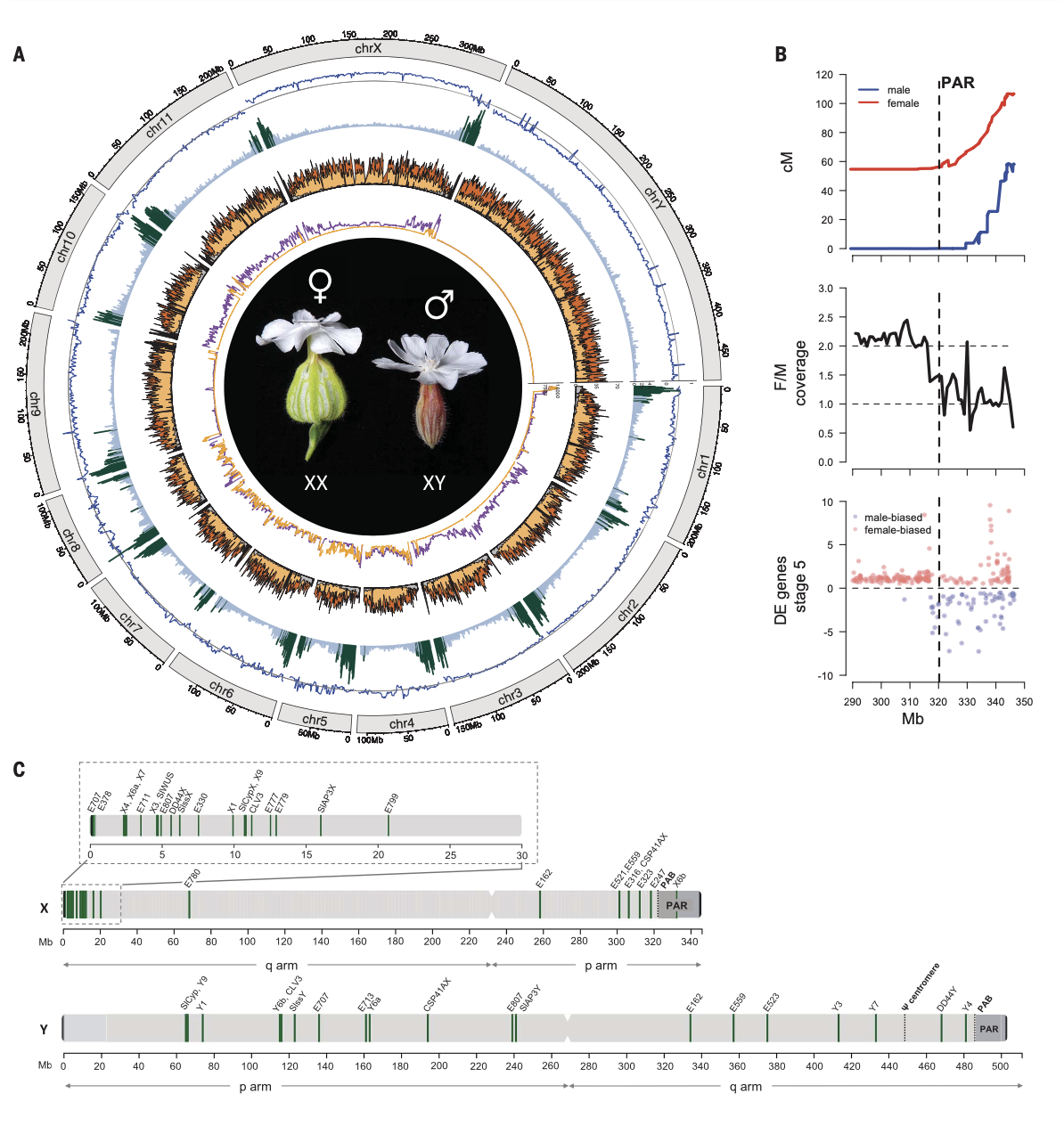
https://www.science.org/doi/10.1126/science.adj7430

Congratulations to Paris for two important publications as first author
02/12/24 14:46
Paris publishes in PLoS Genetics and Nature Communications as first author, congratulations🎉🎉🎉!
1. PLoS Genetics:https://journals.plos.org/plosgenetics/article?id=10.1371/journal.pgen.1011072
The quantitative genetics of gene expression in Mimulus guttatus. PLoS Genetics 20(4): e1011072.
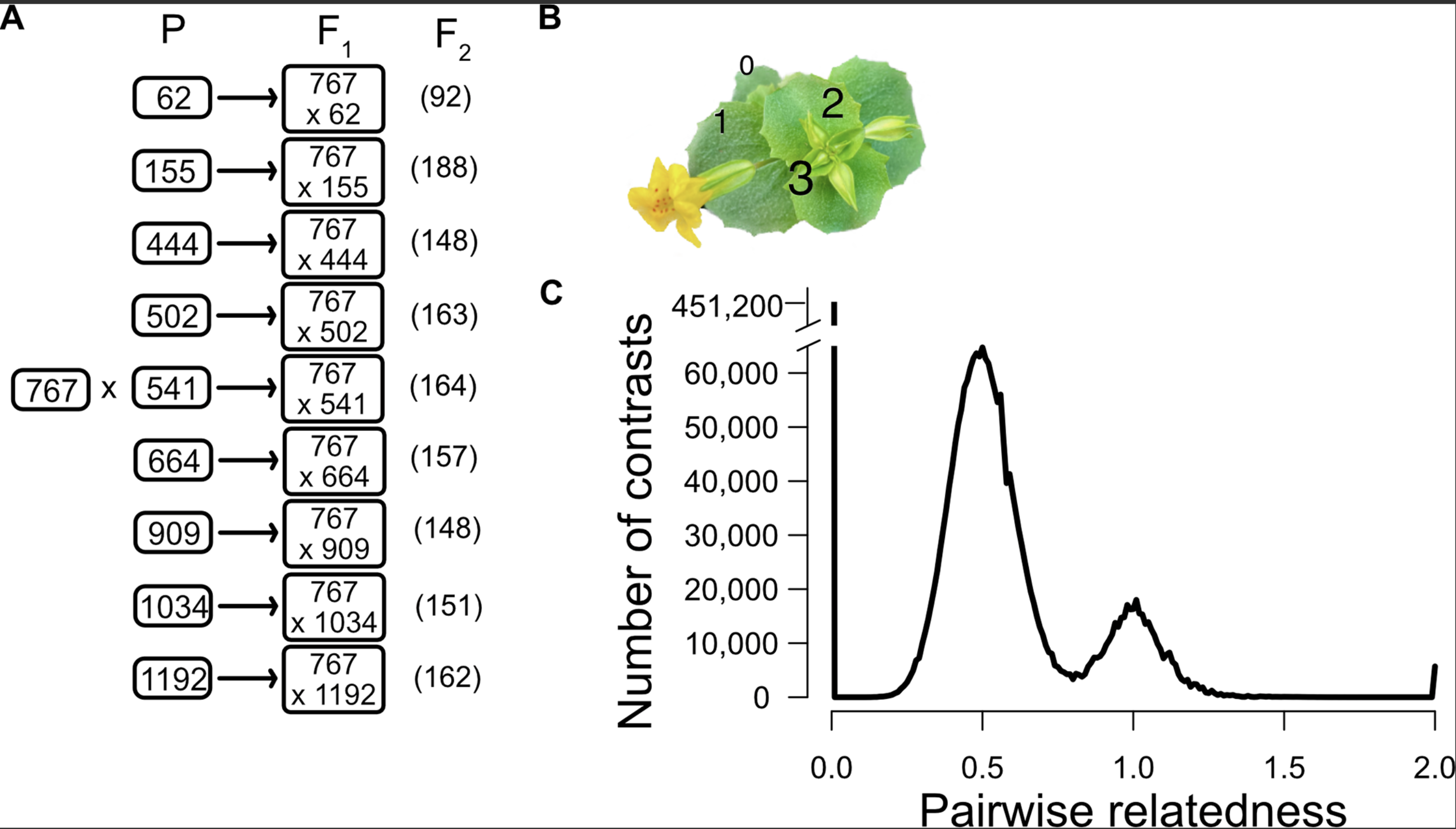
2. Nature Communications: https://www.nature.com/articles/s41467-024-54534-1
Testing the evolutionary theory of inversion polymorphisms in the yellow monkey flower (Mimulus guttatus). Nature Communications 15: 10397.
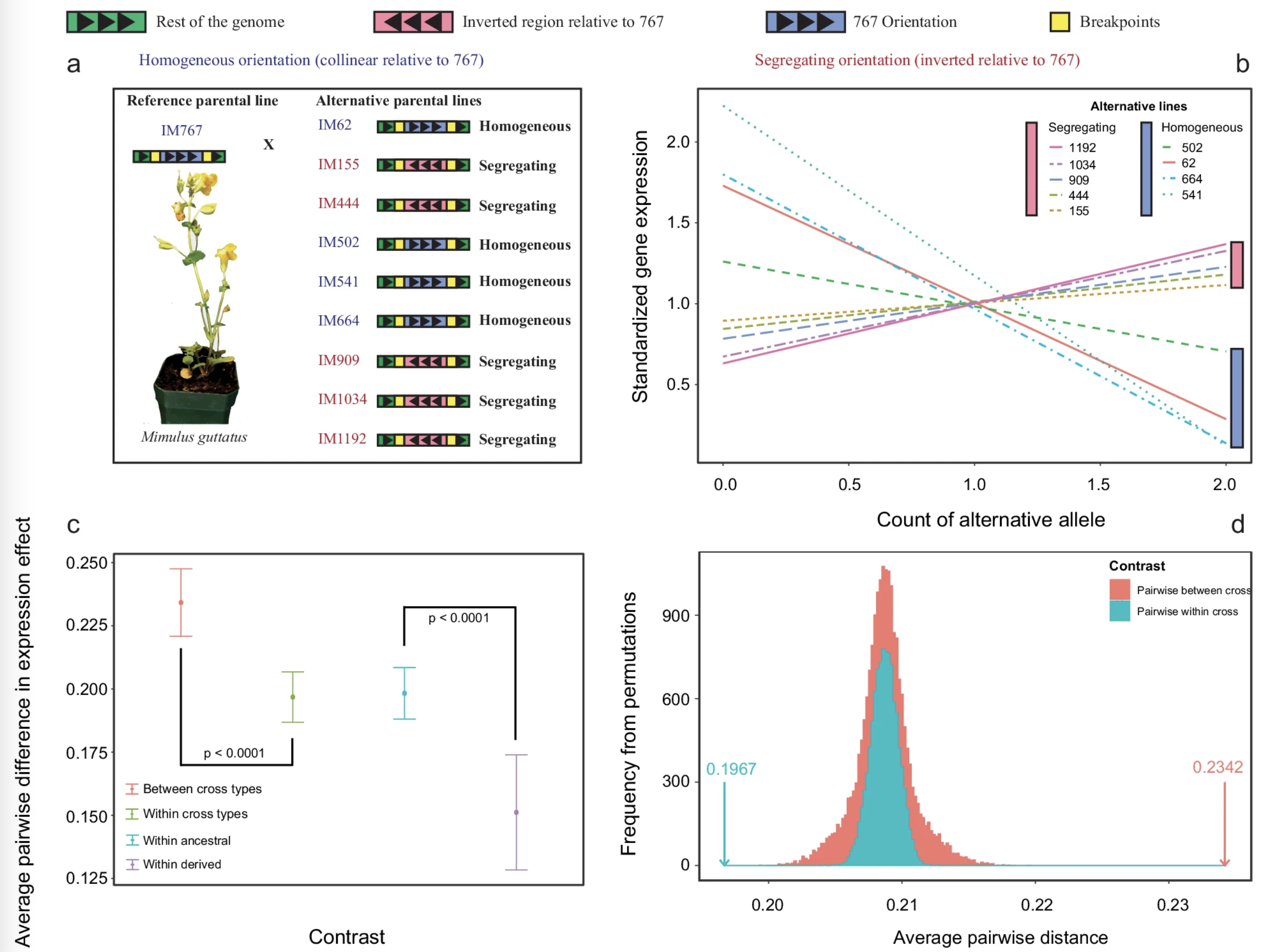
1. PLoS Genetics:https://journals.plos.org/plosgenetics/article?id=10.1371/journal.pgen.1011072
The quantitative genetics of gene expression in Mimulus guttatus. PLoS Genetics 20(4): e1011072.

2. Nature Communications: https://www.nature.com/articles/s41467-024-54534-1
Testing the evolutionary theory of inversion polymorphisms in the yellow monkey flower (Mimulus guttatus). Nature Communications 15: 10397.

New preprint from the lab
23/08/24 08:49
New reprint:
Sex chromosome evolution: The classical paradigm and so much beyond
http://arxiv.org/abs/2408.12034
(This has been accepted as a Book chapter for Encyclopedia of Evolutionary Biology book 2nd Edition)
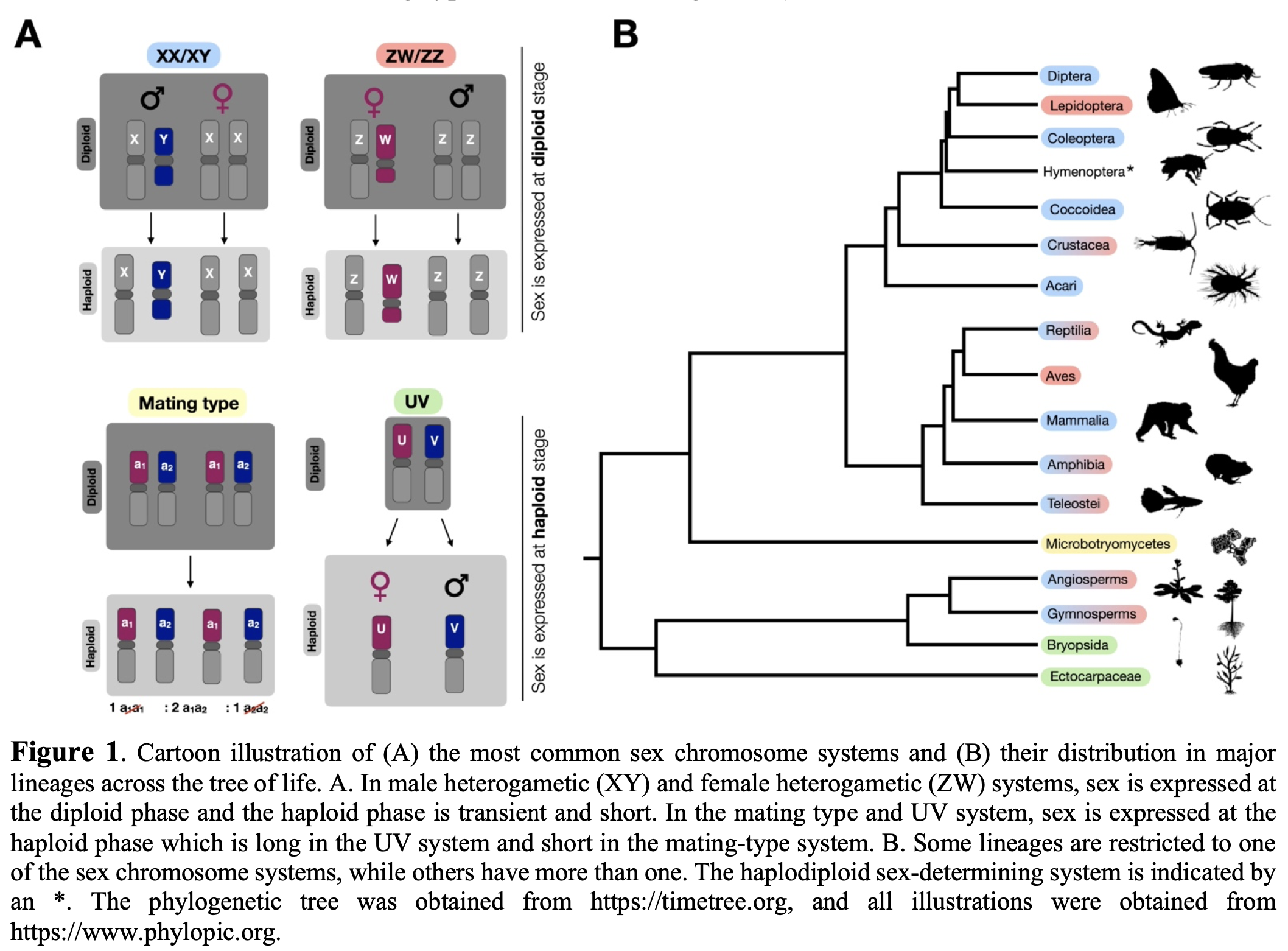
Sex chromosome evolution: The classical paradigm and so much beyond
http://arxiv.org/abs/2408.12034
(This has been accepted as a Book chapter for Encyclopedia of Evolutionary Biology book 2nd Edition)

New preprint from the lab
18/07/24 08:52
New reprint:
Decoding Dmrt1: Insights into vertebrate sex determination and gonadal sex differentiation
https://doi.org/10.48550/arXiv.2407.12060
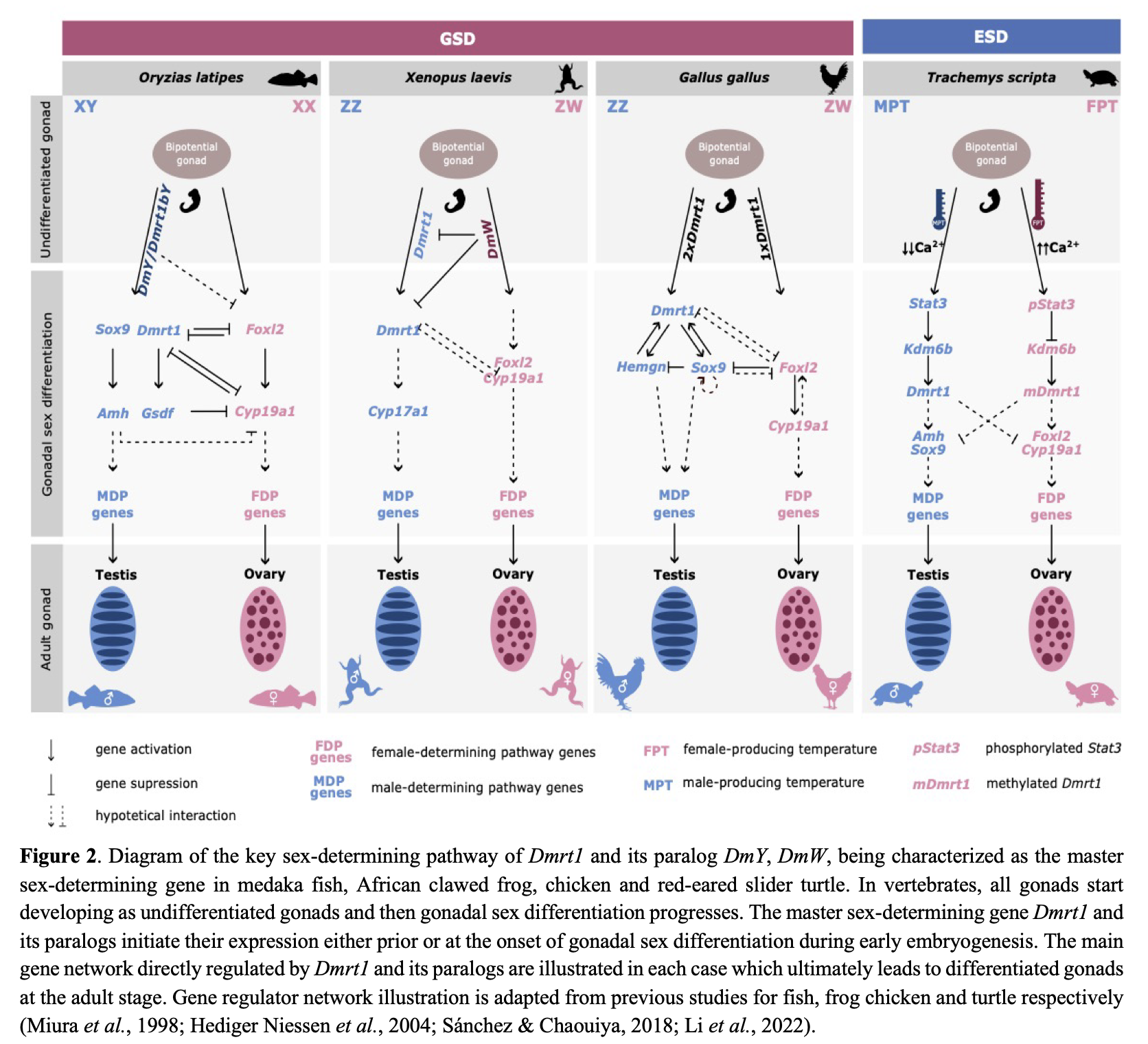
Decoding Dmrt1: Insights into vertebrate sex determination and gonadal sex differentiation
https://doi.org/10.48550/arXiv.2407.12060

New Preprint on meiotic drive and sex chromosome turnover
16/02/22 22:36
New reprint: Hoisted with his own petard: how sex-ratio meiotic drive in Drosophila affinis creates resistance alleles that limit its spread
What is the evolution, dynamics of meiotic drive and the Y-chromosome nondisjunction? Do they lead to Y chromosome loss and thus sex chromosome turnover?
Great teamwork from our fabulous lab technician Kistie Brunsell, undergraduates Emma Knoles and Murtaza Shoaib.

Figure 1. An overview of SR meiotic drive and nondisjunction rate in males in D. affinis.

Figure 2. Lower cost of XSR in females leads to oscillating allele frequencies. A) Representative trajectories for XSR and O with homozygous cost of XSR ranging from 0.1 to 0.9 (1000 generations displayed), B) The same data with ferquencies of XSR in females and O in males plotted on the Y and X axis, respectively (10,000 generations displayed). Read More…
What is the evolution, dynamics of meiotic drive and the Y-chromosome nondisjunction? Do they lead to Y chromosome loss and thus sex chromosome turnover?
Great teamwork from our fabulous lab technician Kistie Brunsell, undergraduates Emma Knoles and Murtaza Shoaib.

Figure 1. An overview of SR meiotic drive and nondisjunction rate in males in D. affinis.

Figure 2. Lower cost of XSR in females leads to oscillating allele frequencies. A) Representative trajectories for XSR and O with homozygous cost of XSR ranging from 0.1 to 0.9 (1000 generations displayed), B) The same data with ferquencies of XSR in females and O in males plotted on the Y and X axis, respectively (10,000 generations displayed). Read More…
New paper on frog sex chromosome diversity and evolution
12/04/21 01:09
Glad to share the recent work:
The Diversity and Evolution of Sex Chromosomes in Frogs
https://doi.org/10.3390/genes12040483
Frogs are ideal organisms for studying sex chromosome evolution because of their diversity in sex chromosome differentiation and sex-determination systems. We review 222 anuran frogs, spanning ~220 Myr of divergence, with characterized sex chromosomes, and discuss their evolution, phylogenetic distribution and transitions between homomorphic and heteromorphic states, as well as between sex-determination systems. Most (~75%) anurans have homomorphic sex chromosomes, with XY systems being three times more common than ZW systems. Most remaining anurans (~25%) have heteromorphic sex chromosomes, with XY and ZW systems almost equally represented. There are Y-autosome fusions in 11 species, and no W-/Z-/X-autosome fusions are known. The phylogeny represents at least 19 transitions between sex-determination systems and at least 16 cases of independent evolution of heteromorphic sex chromosomes from homomorphy, the likely ancestral state. Five lineages mostly have heteromorphic sex chromosomes, which might have evolved due to demographic and sexual selection attributes of those lineages. Males do not recombine over most of their genome, regardless of which is the heterogametic sex. Nevertheless, telomere-restricted recombination between ZW chromosomes has evolved at least once. More comparative genomic studies are needed to understand the evolutionary trajectories of sex chromosomes among frog lineages, especially in the ZW systems.
 Read More…
Read More…
The Diversity and Evolution of Sex Chromosomes in Frogs
https://doi.org/10.3390/genes12040483
Frogs are ideal organisms for studying sex chromosome evolution because of their diversity in sex chromosome differentiation and sex-determination systems. We review 222 anuran frogs, spanning ~220 Myr of divergence, with characterized sex chromosomes, and discuss their evolution, phylogenetic distribution and transitions between homomorphic and heteromorphic states, as well as between sex-determination systems. Most (~75%) anurans have homomorphic sex chromosomes, with XY systems being three times more common than ZW systems. Most remaining anurans (~25%) have heteromorphic sex chromosomes, with XY and ZW systems almost equally represented. There are Y-autosome fusions in 11 species, and no W-/Z-/X-autosome fusions are known. The phylogeny represents at least 19 transitions between sex-determination systems and at least 16 cases of independent evolution of heteromorphic sex chromosomes from homomorphy, the likely ancestral state. Five lineages mostly have heteromorphic sex chromosomes, which might have evolved due to demographic and sexual selection attributes of those lineages. Males do not recombine over most of their genome, regardless of which is the heterogametic sex. Nevertheless, telomere-restricted recombination between ZW chromosomes has evolved at least once. More comparative genomic studies are needed to understand the evolutionary trajectories of sex chromosomes among frog lineages, especially in the ZW systems.
 Read More…
Read More…New paper published in Molecular Ecology
26/03/21 06:18
Thrilled to see this work is finally out in Molecular Ecology!
A single QTL with large effect is associated with female functional virginity in an asexual parasitoid wasp
https://doi.org/10.1111/mec.15863
During the transition from sexual to asexual reproduction, a suite of reproduction‐related sexual traits become superfluous, and may be selected against if costly. Female functional virginity refers to asexual females resisting to mate or not fertilizing eggs after mating. These traits appear to be among the first that evolve during transitions from sexual to asexual reproduction. The genetic basis of female functional virginity remains elusive. Previously, we reported that female functional virginity segregates as expected for a single recessive locus in the asexual parasitoid wasp Asobara japonica. Here, we investigate the genetic basis of this trait by quantitative trait loci (QTL) mapping and candidate gene analyses. Consistent with the segregation of phenotypes, we found a single QTL of large effect, spanning over 4.23 Mb and comprising at least 131 protein‐coding genes, of which 15 featured sex‐biased expression in the related sexual species Asobara tabida. Two of the 15 sex‐biased genes were previously identified to differ between related sexual and asexual population/species: CD151 antigen and nuclear pore complex protein Nup50. A third gene, hormone receptor 4, is involved in steroid hormone mediated mating behaviour. Overall, our results are consistent with a single locus, or a cluster of closely linked loci, underlying rapid evolution of female functional virginity in the transition to asexuality. Once this variant, causing rejection to mate, has swept through a population, the flanking region does not get smaller owing to lack of recombination in asexuals.
 Read More…
Read More…
A single QTL with large effect is associated with female functional virginity in an asexual parasitoid wasp
https://doi.org/10.1111/mec.15863
During the transition from sexual to asexual reproduction, a suite of reproduction‐related sexual traits become superfluous, and may be selected against if costly. Female functional virginity refers to asexual females resisting to mate or not fertilizing eggs after mating. These traits appear to be among the first that evolve during transitions from sexual to asexual reproduction. The genetic basis of female functional virginity remains elusive. Previously, we reported that female functional virginity segregates as expected for a single recessive locus in the asexual parasitoid wasp Asobara japonica. Here, we investigate the genetic basis of this trait by quantitative trait loci (QTL) mapping and candidate gene analyses. Consistent with the segregation of phenotypes, we found a single QTL of large effect, spanning over 4.23 Mb and comprising at least 131 protein‐coding genes, of which 15 featured sex‐biased expression in the related sexual species Asobara tabida. Two of the 15 sex‐biased genes were previously identified to differ between related sexual and asexual population/species: CD151 antigen and nuclear pore complex protein Nup50. A third gene, hormone receptor 4, is involved in steroid hormone mediated mating behaviour. Overall, our results are consistent with a single locus, or a cluster of closely linked loci, underlying rapid evolution of female functional virginity in the transition to asexuality. Once this variant, causing rejection to mate, has swept through a population, the flanking region does not get smaller owing to lack of recombination in asexuals.
 Read More…
Read More…My last unpublished PhD work is now online bioRxiv
13/11/20 01:16
Thrilled to share my last unpublished PhD work 
A single QTL with large effect is associated with female functional virginity in an asexual parasitoid wasp
In this study, we investigate the genomic regions underpinning female functional virginity by QTL mapping and candidate gene analyses. Consistent with the segregation of phenotypes, our QTL analysis identified a single large-effect size QTL on LG12 at 7 or 8 cM, strongly associated with female functional virginity.
To our knowledge, this is the first study to identify candidate genes for female functional virginity, a trait that is predicted to evolve in transition from sexuality to asexuality. Overall, our results are consistent with a single gene or a cluster of linked genes underlying rapid evolution of female functional virginity in the transition to asexuality. Once a mutation for rejection to mate has swept through a population, the region comprising the gene(s) does not get smaller due to lack of recombination in asexuals.
More details and results about this article can be found here.
 Read More…
Read More…
A single QTL with large effect is associated with female functional virginity in an asexual parasitoid wasp
In this study, we investigate the genomic regions underpinning female functional virginity by QTL mapping and candidate gene analyses. Consistent with the segregation of phenotypes, our QTL analysis identified a single large-effect size QTL on LG12 at 7 or 8 cM, strongly associated with female functional virginity.
To our knowledge, this is the first study to identify candidate genes for female functional virginity, a trait that is predicted to evolve in transition from sexuality to asexuality. Overall, our results are consistent with a single gene or a cluster of linked genes underlying rapid evolution of female functional virginity in the transition to asexuality. Once a mutation for rejection to mate has swept through a population, the region comprising the gene(s) does not get smaller due to lack of recombination in asexuals.
More details and results about this article can be found here.
 Read More…
Read More…GBE Cover of April issue 2020
13/04/20 22:38
Our illustration anther smut fungus infection of Silene latifolia made it for the GBE (Genome Biology and Evolution) April Cover.
In this paper, we found that #DifferentialExpression between haploid mating types is associated with various degenenerious mutations,
More details and results about this article can be found here:
https://doi.org/10.1093/gbe/evaa028
 Read More…
Read More…
In this paper, we found that #DifferentialExpression between haploid mating types is associated with various degenenerious mutations,
More details and results about this article can be found here:
https://doi.org/10.1093/gbe/evaa028
 Read More…
Read More…New paper published at JEB
23/11/19 16:15
No effect of sex chromosome differentiation on male phenotype, mating or fathering success
 Read More…
Read More…
 Read More…
Read More…New paper is out in MBE
20/10/19 23:39
Higher Gene Flow in Sex-Related Chromosomes than in Autosomes during Fungal Divergence
Fig. 1 Sampling and population structure of the 38 studied anther-smut fungal Microbotryum strains on Silene caroliniana and S. virginica inferred based on autosomal genome-wide single-nucleotide polymorphisms (SNPs).

Fig. 2 Large inversions on two autosomal contigs between the MvCa and MvVi Microbotryum genetic clusters and signatures of positive selection.
 Read More…
Read More…
Fig. 1 Sampling and population structure of the 38 studied anther-smut fungal Microbotryum strains on Silene caroliniana and S. virginica inferred based on autosomal genome-wide single-nucleotide polymorphisms (SNPs).

Fig. 2 Large inversions on two autosomal contigs between the MvCa and MvVi Microbotryum genetic clusters and signatures of positive selection.
 Read More…
Read More…My first preprint and first paper on fungi genomics, mating-type chromosomes and differential gene expression
02/05/19 23:56
Differential gene expression is associated with degeneration of mating-type chromosomes in the absence of sexual antagonism
Figure1. Comparisons of differentially expressed (DE) versus non-differentially expressed (non-DE) genes between mating types of Microbotryum lychnidis-dioicae for various degeneration-associated traits within genomic compartments.

Figure2. Significant predictors of the degree of differential expression between mating types of Microbotryum lychnidis-dioicae testing directional effects of degeneration-associated traits.
 Read More…
Read More…
Figure1. Comparisons of differentially expressed (DE) versus non-differentially expressed (non-DE) genes between mating types of Microbotryum lychnidis-dioicae for various degeneration-associated traits within genomic compartments.

Figure2. Significant predictors of the degree of differential expression between mating types of Microbotryum lychnidis-dioicae testing directional effects of degeneration-associated traits.
 Read More…
Read More…A happy coincidence of my two papers are online on the same day!
06/10/18 00:04
What a happy coincidence today! Thrilled to see our two frog sex chromosome evolution papers are out today! 

Good chance to know more about evolution of sex-biased gene expression in early stage of sex chromosome evolution, and a crazy fast rate of sex chromosome turnover in true frogs. Check them out!
The article in Genome Biology:
https://genomebiology.biomedcentral.com/…/10.1186/s13059-01…

and
The article in Nature Communications:
https://www.nature.com/articles/s41467-018-06517-2
 Read More…
Read More…
Good chance to know more about evolution of sex-biased gene expression in early stage of sex chromosome evolution, and a crazy fast rate of sex chromosome turnover in true frogs. Check them out!
The article in Genome Biology:
https://genomebiology.biomedcentral.com/…/10.1186/s13059-01…

and
The article in Nature Communications:
https://www.nature.com/articles/s41467-018-06517-2
 Read More…
Read More…Manuscript on plant polyploidy is submitted today
19/07/18 00:14
Today is a happy day overall: my manuscript on a new polyploid Mercurialis annua species inferring from functional divergence in inflorescence morphology, hybrid sterility and patterns of introgression has been submitted! The ms reads very nicely, hopefully the reviewers will like it too.
We had delicious Thai dish, Pad Thai and Phanaeng curry, to celebrate a ms submission!
